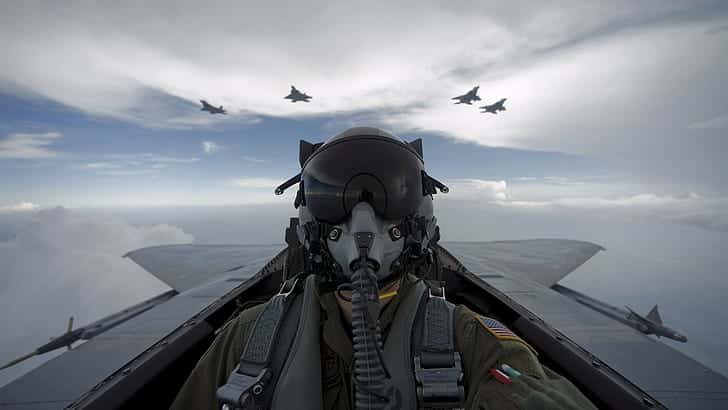Life insurance for military pilots carries unique considerations, shaped by the inherent risks and specific circumstances of their profession. Military pilots engage in critical but often hazardous duties, making the need for adequate life insurance coverage a paramount concern for them and their families. In this article, we will delve into the topic of “Life Insurance for Military Pilots,” examining the specialized insurance needs and options available to those who serve in this high-risk role.
Military pilots face distinct challenges when it comes to securing life insurance. Traditional life insurance policies may have exclusions or higher premiums for occupations deemed high-risk, such as military aviation. However, there are specific policies and provisions designed to cater to the needs of military personnel, including pilots. This article aims to explore these options, highlighting the importance of understanding the nuances of life insurance coverage for those who serve in such a vital and daring capacity.
Exploring Life Insurance Options for Military Pilots
Military pilots require life insurance policies that acknowledge and cover the unique risks associated with their profession. Understanding the available options is crucial for ensuring comprehensive coverage.
Types of Life Insurance Policies for Military Pilots
- Government-Provided Options: The most common option for military personnel is the Servicemembers’ Group Life Insurance (SGLI), a group term life insurance policy for active-duty military members, including pilots. It offers coverage up to a certain limit and is generally available at a standard rate, irrespective of the risk level of the service member’s duties.
- Private Insurance Policies: Military pilots can also opt for private life insurance policies. Some insurance companies specialize in policies for military personnel, offering plans that cater to the specific risks and needs of pilots. These policies might come at higher premiums due to the increased risk but can offer more extensive coverage or higher limits than SGLI.
Factors Influencing Coverage and Premiums
- Occupational Hazards: The high-risk nature of military aviation directly impacts insurance premiums and coverage options. Insurers may assess the specific duties and deployment scenarios of pilots to determine policy terms.
- Policy Exclusions: Some private life insurance policies may have exclusions related to war or specific military operations. It’s crucial to understand these exclusions when choosing a policy.
- Additional Benefits: Certain policies may offer additional benefits like coverage for severe injuries or accelerated death benefits, which can be particularly relevant for military pilots.
Considerations for Military Pilots Choosing Life Insurance
- Assessing Coverage Needs: Pilots should assess their coverage needs based on their family situation, financial obligations, and the risks associated with their role. This assessment helps in determining the appropriate amount of coverage.
- Comparing SGLI with Private Policies: While SGLI is a valuable resource, pilots should consider whether additional private insurance is necessary for their specific circumstances.
- Understanding Policy Terms: Carefully reviewing the terms, including any exclusions or special provisions, is essential to ensure that the policy truly meets the pilot’s needs.
- Planning for Transition: Military pilots transitioning to civilian life should plan for changes in their life insurance coverage. Policies like the Veterans’ Group Life Insurance (VGLI) offer options for veterans after leaving the service.
Conclusion: Navigating Life Insurance Decisions for Military Pilots
In concluding our discussion on “Life Insurance for Military Pilots,” it’s evident that the unique demands and risks of a military pilot’s profession necessitate a careful and informed approach to selecting life insurance. Military pilots have access to government-provided options like SGLI, which offer essential coverage but may not fully address all individual needs, especially considering the high-risk nature of their job. Therefore, supplementing SGLI with private life insurance policies can be a strategic move for enhanced financial security.
For military pilots, assessing individual life insurance needs involves a thorough evaluation of personal and family circumstances, financial obligations, and future plans, including the transition to civilian life. The key lies in striking a balance between adequate coverage and manageable premiums, while also ensuring that the policy terms align with the unique aspects of military service. Pilots should pay close attention to policy exclusions, particularly those related to combat or specific military operations, to avoid gaps in coverage.
Moreover, as military pilots transition out of service, considering how their life insurance needs will change is crucial. Programs like VGLI provide options for continued coverage post-service, but comparing these with civilian policies is advisable to ensure the best coverage at this career stage.
Ultimately, the decision on life insurance for military pilots should be guided by a comprehensive understanding of both government and private insurance options, along with a clear assessment of personal risk factors and coverage requirements. Consulting with insurance professionals who have experience in military policies can provide valuable insights and help tailor a decision to specific needs.
In summary, while navigating life insurance options as a military pilot presents unique challenges, being well-informed and proactive in planning can ensure that you and your family are adequately protected, no matter what the future holds. This informed approach to life insurance is not just a financial decision but a crucial aspect of a military pilot’s commitment to safeguarding their family’s future.



